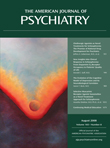This volume is comprised of papers and editorial responses from two dozen distinguished scholars, half from Harvard University, focusing on pain (both physical and emotional) and its social transformation. The material for the book comes from a seminar series and conference chaired by Arthur Kleinman and Sarah Coakley and sponsored by the Mind/Brain/Behavior Initiative at Harvard. Dr. Kleinman is a former chair of the Department of Anthropology at Harvard who trained in psychiatry at Massachusetts General Hospital. Ms. Coakley is a professor in Harvard Divinity School. The volume reflects their broad yet interconnected interests.
There are a number of stellar contributions. Pain is considered from a molecular and cellular level, as well as at the level of the sadness and agony experienced by specific ethnic groups who developed rituals to help the afflicted distance themselves from their suffering. Music, trance, and self-mutilation are addressed. For example, the pain (or absence thereof) of the Shi’i Muslim practice of matam, a form of self-flagellation using lacerating razors during the annual pilgrimage to Karbala (reflecting on Husain ibn Ali’s martyrdom in 680 CE), is addressed in some detail. Briefly discussed is the self-injurious behavior (or “cutting”) of patients with borderline personality disorder.
This volume covers the nature of acute pain (emotional and/or physical). Herbert Benson discusses the relaxation response as it helps with pain control. The chronic pain of long-term meditators and those devoting their lives to prayer (e.g., members of religious orders practicing ultra-intense praying to experience the pain of Jesus) is also addressed.
Notable contributions come from Clifford Woolf’s chapter “Deconstructing Pain: A Deterministic Dissection of the Molecular Basis of Pain.” Also notable is Howard Fields’ chapter on the associations of pain pathways and networks, in which he writes, “the brain is the site where culture and biology interact.” He takes on phantom limb pain, referred pain, battlefield pain, the placebo response, the gate control hypothesis in current perspective, and modulatory systems of top-down influence on pain. Fields concludes, “the study of stimulus-bound components is…the province of neurobiology. The study of the context-determined components is an inherently multidisciplinary endeavor and is in its infancy.”
Judith Becker’s chapter on “Music, Trancing, and the Absence of Pain” is wonderfully concise and clear. Trance consciousness and repetitive ritual, as in musical forms, should open up ways to study the neurophysiology of consciousness without the “I-ness.” Kay Kaufman Shelemay’s summary on music and pain is superb, as is Howard Fields’ discussion of ritual and expectation: “One big problem is that about 99% of pain research has focused on the spinal cord, but 99% of the pain experience is in the brain, where culture, society, and expectation come into play.”
Other notable contributions are the chapters from Elaine Scarry, a professor of aesthetics, which looks at injuries to heroic figures in art (e.g., works by Rubens, Pacceo de Rosa, and Mantegna, plus Francis Bacon, Munch, and Kollwitz). Laurence Kirmayer has an important chapter and spirited discussion on cultural mediation of pain.
Tu Weiming reminds us that pain can be explained in evolutionary terms, but he posits that suffering requires a more explanatory model, as described in the conceptual basis of Chinese medicine. Jennifer Cole contributes a chapter on the experience of emotional pain and suffering from a social perspective. Her fieldwork focuses on the terrors of a remote war involving the Betsimisaraka tribe of Madagascar, reactivated by new social strife and partially healed by the social ritual of sacrificing bulls.
All of the chapters are fascinating, but there are some parts that seem only tangentially relevant to the discussion of what one usually considers the domain of pain: somatic discomfort associated with physical injury. Thus the passages about the spiritual pain of Christian mystical figures such as Carmelites Saint Teresa of Ávila and Saint John of the Cross are overly long. Similarly, the chapter about the voices of the Finnish Karelian itkuvirsi, or ritual lament that relates to the suffering of a whole transplanted tribe, seems to stray too far. How a community unburdens its sorrow is important, but whether it is relevant to pain is not clear.
The editing of the discussion transcripts for each chapter has been done wonderfully well, but one of the editors, Coakley, did not do herself that favor for her own chapter, which has many tediously long sentences (two back-to-back sentences last for 11 lines and 124 words).
This is a powerful book with many insights for those interested in pain. You will probably need a dictionary to look up some of the many abstruse terms more familiar to cultural anthropologists and philosophers than psychiatrists. And you will probably want a pen to underline some of the participants’ fascinating observations.

